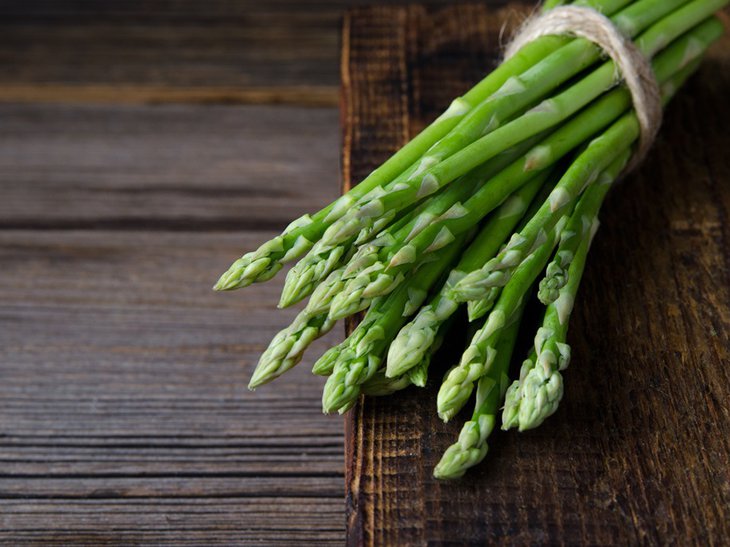The thing about asparagus is that as soon as they appear in stores and stalls, they are gone. The season for them is very short - it lasts from April to June. So it's worth not missing it and eating enough - you don't have to worry about calories, because there are few of them, with a high content of nutrients :)
There are three main varieties of asparagus: green, white and purple. The most popular and most common are green asparagus. When purchasing, it is worth paying attention to two aspects: color intensity and tip. The "greenest" ones with closed ends will also be the freshest.
Depending on the color, they differ in taste, cooking time and properties.
And speaking of features, there are quite a lot of them!
Asparagus is low in calories (only 20 kcal in 100 grams), but it is rich in nutrients, including: vitamin K, A, C, folic acid Whether potassium.
100 g provides 2 grams of fiber.
They are a great source of antioxidants: mostly carotenoids, flavonoids (including quercetin) and phytosterols. They have anti-inflammatory effects, support the functioning of the urinary and digestive systems, have a beneficial effect on the skin, hair and nails and prevent cardiovascular diseases.
It has been proven that saponins contained in asparagus have anti-cancer effect – especially in the case of colon cancer, but alsoaka hepatocellular carcinoma, breast cancer, pancreas Whether endometrium.
HOW TO PREPARE ASPARAGUS?
Most often, they are boiled in water. You can also steam or bake in the oven. It is worth peeling/cutting off thick, hard elements.
They can be served in many different ways - starting with them alone, sautéed, cooked in lightly salted water. They are an ideal base for a salad, an addition to pasta or an ingredient of a savory tart. You can make a cream soup out of them and fry them in olive oil and garlic. They go great with mustard, lightly grilled or baked, and with new potatoes.
Practical tip:
Before putting them in the fridge, cut off the thick ends and soak them in water. They can be stored in refrigerated conditions for up to a week.
Bibliography:
https://pubmed.ncbi.nlm.nih.gov/24310501/
https://pubmed.ncbi.nlm.nih.gov/23754197/
https://pubmed.ncbi.nlm.nih.gov/23450726/
https://pubmed.ncbi.nlm.nih.gov/20176464/
https://pubmed.ncbi.nlm.nih.gov/29532545/
https://pubmed.ncbi.nlm.nih.gov/20709209/
https://pubmed.ncbi.nlm.nih.gov/8640742/
https://pubmed.ncbi.nlm.nih.gov/11860786/
https://pubmed.ncbi.nlm.nih.gov/30156381/
https://pubmed.ncbi.nlm.nih.gov/33338094/

